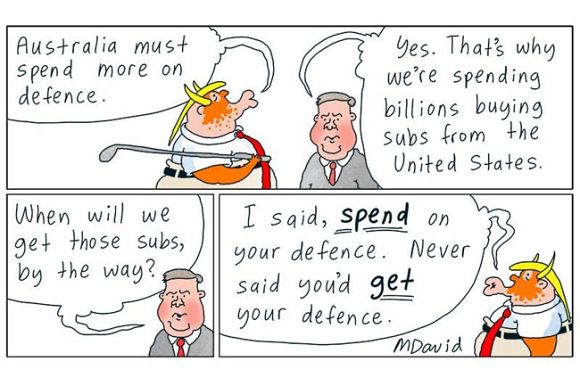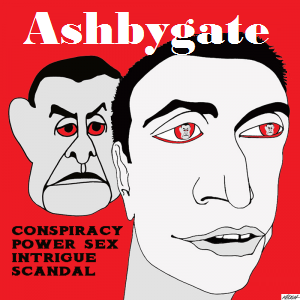Despite repeated conference pledges and overwhelming public support, Labor continues to stall on signing the nuclear weapons ban Treaty highlighted in a damning Four Corners report, writes Bevan Ramsden.
A RECENT Four Corners program highlighted the failure of the Albanese ALP Government to sign and ratify the Treaty on the Prohibition of Nuclear Weapons (TPNW).
The program also went back in time to show Anthony Albanese moving the motion at an ALP National Conference, establishing that an ALP government, in power, would sign and ratify the Treaty. Richard Marles, now the Minister for Defence, seconded that motion. The same motion to sign the Treaty when in government has been passed at successive ALP National Conferences.
The ALP came into power in 2022 but did not sign the Treaty in its first term of government. Now into its second term of government, it has still indicated no intention of doing so. It is not lacking the numbers “on the floor” as it has a substantial majority in parliament.
Deputy Prime Minister and Minister for Defence Richard Marles was questioned in the Four Corners program as to why the Government has not signed it. He had no answer to that question except to suggest that it is different when you are in government. He gave no indication that the Government would sign the Treaty in this second term.
And the Government steadfastly holds to this position despite the polls showing an overwhelming majority of Australians want the Treaty signed as a step towards keeping the world safer from nuclear war. ICAN, the International Campaign Against Nuclear Weapons, has this support well documented.
It doesn’t require a great deal of intelligence to deduce the reason for the ALP Government’s reluctance to sign the Treaty. Simply put, signing and ratifying it requires mandatory consequential action to close United States access to certain military installations in Australia related to U.S. nuclear war-fighting abilities. Taking that action would put the U.S. military alliance with Australia in jeopardy, if not result in its termination.
The ALP Government and, in this matter, the Liberal Coalition are committed to this alliance with enthusiasm and subservience.
States signing and ratifying the TPNW must not support in any way the nuclear war-fighting operations of a nuclear power. Australia is currently providing, or about to provide, at least four installations that assist the United States’ nuclear war-fighting ability.
Pine Gap provides the U.S. with real-time and vital satellite surveillance data to the nuclear war room in Nevada via the Relay Ground Station in Central Australia, for use in a nuclear war. It would have to be closed to the United States if the TPNW were signed and ratified.
The Harold Holt Communications Station at NW Cape at Exmouth in Western Australia enables the United States to communicate with its nuclear-armed, hunter-killer submarine fleet while it is submerged and, through this facility, can send the trigger signal to launch nuclear missiles. Clearly, signing and ratifying the TPNW would require closing the United States' access to this communication facility.
The porting and maintenance facilities currently under construction at HMAS Stirling in WA, for $8 billion to the Australian taxpayer, are to service United States and United Kingdom nuclear hunter-killer submarines. The United States refuses to confirm or deny whether its nuclear submarines are armed with nuclear weapons.
An Australian government, in signing and ratifying the TPNW, and to be sure and safe in its compliance with that Treaty, would need to halt this construction program and refuse porting and maintenance facilities to U.S. nuclear submarines.
A fourth installation is being constructed at RAAF Base Tindal in the Northern Territory. Parking and support facilities are being established at that base for up to six United States B-52 bombers, some of which can be nuclear-armed. Again, it is the policy of the U.S. to neither confirm nor deny that such bombers are carrying nuclear weapons.
The same consequential actions would emanate from the signing and ratifying of the TPNW. Such facilities could not be provided to a nuclear-armed power, in this case, the United States.
All four of these military facilities have been established under the umbrella of the U.S.-Australia military alliance. The facilities at HMAS Stirling are being established under AUKUS, a subset of the alliance. The facilities at Tindal are under the U.S. Force Posture Agreement, also a subset of the U.S. alliance.
Australians want to reduce the risk of nuclear war and want the Government to sign and ratify the Treaty. It is vital that we now recognise the U.S. alliance and the military facilities established under its umbrella as representing the major obstacles to signing the Treaty. The way forward to a more peaceful world means ending this alliance.
IPAN, the Independent and Peaceful Australia Network, is campaigning for the cancellation of AUKUS and the termination of the Force Posture Agreement as steps towards ending the U.S. alliance.
In addition to seeing the alliance as an obstacle to signing the TPNW, IPAN sees these military installations as involving Australia in a U.S.-led war on China, in which case they would become missile targets for any enemy of the United States.
We are flooded with propaganda casting China as a threat to Australia. Minister Marles talks in general terms of Australia facing a major change in strategic circumstances, of China’s massive military build-up, but when pressed to be more specific, he points to the Chinese threat to shipping lanes in the South China Sea and the need for freedom of navigation exercises to keep the shipping lanes open.
In saying this, Marles exposes the shallowness of the anti-China rhetoric. China has never threatened shipping lanes in the South China Sea or elsewhere and for a very good reason. It needs them open and free for its extensive shipping trade with the world, including Australia.
The real purpose of so-called ”freedom of navigation” exercises, instigated by the United States and obediently followed by Australia, is to gather intelligence about China’s defence activities. For example, Australian and U.S. aircraft and naval vessels drop sonar buoys in those seas to collect the sound signatures of Chinese submarines to aid in their detection and enable them to be hunted down in a war situation.
It's little surprise that the Chinese PLA have fired warning flares at Australian aircraft engaging in such activities, including surveillance of their coastal military installations.
Professor Clinton Fernandes in his recent book, Turbulence: Australian Foreign Policy in the Trump Era, states:
Each ship or submarine has an acoustic signature akin to a sonic fingerprint, which is used for identification purposes. Analysts compare the signal collected by the sonobuoys with previously recorded signatures...
Australia and the United States airdrop sonobuoys by the thousands [and] help prepare the battlespace by acquiring technical intelligence that enables anti-submarine forces to attack enemy submarines at the start of hostilities, if ordered. This is no secret to the Chinese military, but it is largely concealed from the Australian public who are told that the activities merely constitute “freedom of navigation” — a benign and reasonably-sounding term.
The silence over what “freedom of navigation” really involves protects the Government from democratic accountability, and from debate as to how Australia’s intelligence agencies and military should be used.
IPAN has called for these so-called “freedom of navigation” and surveillance exercises by the Australian Navy and Air Force to cease and for the recall of all such personnel back to Australia, where they can exercise their responsibility for true Australian territorial self-defence. Their activity in the South China Sea and associated areas also poses the risk of an incident or miscalculation that could escalate into unintended hostilities or worse.
Ending the U.S. alliance would make Australia much safer and keep us out of unnecessary conflict. It would enable Australia to pursue peaceful relations with our neighbours and all countries in our region as an independent country.
In the words of former PM Malcolm Fraser, in his book, Dangerous Allies, he states:
I believe our relationship with the United States has become a paradox. Our leaders argue we need to keep our alliance with the United States strong in order to ensure our defence in the event of an aggressive foe. Yet the most likely reason Australia would need to confront an aggressive foe is our strong alliance with the United States. We need America for defence from an attacker who is likely to attack us because we use America for defence. It is not a sustainable policy.
That does not mean we don’t need our own defence force, but as an independent country, free of the alliance, its operations can be directed at true self-defence of our territory, not engaging in disastrous overseas wars instigated by the U.S.
Finally, the late Malcom Fraser, in urging the breaking of the subservient relationship with the United States, says:
‘An independent Australia could act much more effectively in concert with other Western Pacific countries, on the one hand to avoid flashpoints and points of danger, and on the other to promote initiatives that would do much to maintain continuing peace throughout the region. Yet as part of the American network, we would not be able to take such action. We would merely be regarded as a surrogate voice of America.’
Bevan Ramsden is a long-time peace activist going back to his full-time voluntary organising work in the Vietnam Moratorium Campaign, for which he was, with Jim Cairns, the Victorian representative on the National Vietnam Moratorium Campaign committee. He has continued since in peace activities and more recently as a member of the national coordinating committee for the Independence and Peaceful Australia network and editor of its monthly publication, Voice.
 This work is licensed under a Creative Commons Attribution-NonCommercial-NoDerivs 3.0 Australia License
This work is licensed under a Creative Commons Attribution-NonCommercial-NoDerivs 3.0 Australia License
Support independent journalism Subscribe to IA.

Related Articles
- Labor’s climate promises under scrutiny in second term
- Chalmers urged to solve a productivity problem that may not exist
- Jobs, inflation and luxury spending all keep setting records
- Election recap: Democracy was done but with dark clouds at extreme Right
- Now let’s see how Labor transforms the nation















